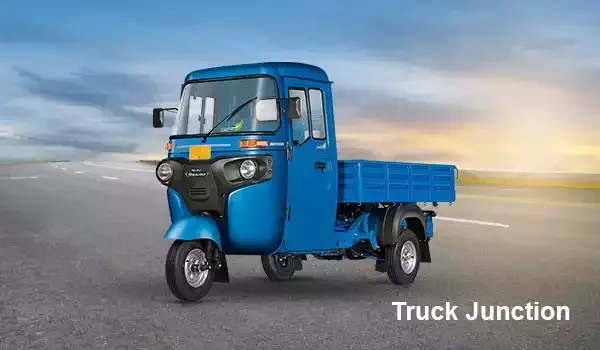Introduction
When compressed natural gas (CNG) and electric vehicles are introduced, urban mobility experiences a dramatic change. This investigation explores the cost structure of CNG vehicles, with a particular emphasis on Bajaj’s Maxima CNG Auto and Ape Auto. It then moves on to the topic of electric vehicles, providing details on Piaggio’s electric vehicle price.
Bajaj Maxima CNG Auto Price: Pioneering Sustainable Urban Transport
- Overview of Bajaj Maxima CNG Auto: The Maxima CNG Auto from Bajaj is a trailblazer in the field of sustainable urban transportation. The first step in comprehending the cost of this CNG-powered three-wheeler is to examine its main attributes and technical details.
- Elements Affecting the Cost of a Maxima CNG Vehicle: The engine specs, seating capacity, design elements, and technological improvements all have an impact on the price of the Maxima CNG Auto. Prospective purchasers must comprehend how these elements fit into the entire pricing strategy.
CNG Auto Price On Road: Navigating Affordability and Operational Costs
- On-Road Pricing Dynamics: The base price of the car, taxes, insurance, and registration fees are all included in the price of a CNG vehicle on the road. For potential purchasers, analyzing the dynamics of on-road pricing offers a clear picture of the overall cost of ownership.
- Benefits of Operational Cost: The fact that CNG cars have lower running costs than conventional fuel options is one of their main advantages. Examining the relationship between the benefits of operating costs and on-road pricing adds to the story of total affordability.
CNG Auto Price in Patna: Localized Perspectives on Affordability
- Regional Variations in Pricing: Regional issues including taxes, transportation expenses, and municipal laws might cause variances in CNG auto prices. Localized insights can be obtained by comprehending how pricing is adjusted to satisfy the unique needs of various locations, such as Patna.
- Government Subsidies and Incentives: Public subsidies and incentives influence how much CNG cars cost. Comprehending how local policies affect prices helps to provide a thorough grasp of the affordability equation.
Ape Auto Price: Piaggio’s Contribution to Last-Mile Connectivity
- Introduction to Ape Auto: One well-known competitor in the three-wheeler market is Piaggio’s Ape Auto, which provides a flexible last-mile connectivity option. To grasp Ape Auto’s pricing approach, it is necessary to examine its unique features and applications.
- Price Competitiveness and Segment Positioning: Ape Auto serves a variety of applications, including passenger services and cargo transportation, and operates in a competitive segment. Piaggio’s market strategy can be understood by examining how it prices Ape Auto to be competitive.
Piaggio Electric Auto Price: Shaping the Future of Urban Mobility

- Piaggio’s Foray into Electric Mobility: The electric vehicle from Piaggio is an example of a progressive approach to urban mobility. Examining the features and specifications of this electric car establishes the foundation for comprehending its cost within the framework of the changing electric mobility scene.
- Sustainability and Environmental Impact: Piaggio’s electric car’s pricing is determined by taking sustainability and environmental impact into account. Analyzing the company’s pricing strategy in relation to the more general objectives of green mobility provides information on where urban transportation is headed in the future.
Comparative Analysis: Weighing Options for Sustainable Urban Transport
- Maxima CNG vs. Ape Auto: Navigating Choices in CNG Segment: Comparing the design, performance, and cost of Bajaj’s Maxima CNG Auto versus Piaggio’s Ape Auto entails doing a thorough analysis. Comprehending the options in the CNG market helps prospective purchasers make wise selections.
- Piaggio Electric Auto vs. Ape Auto: Differing Routes in Urban Mobility When comparing Piaggio’s Ape Auto to its electric equivalent, one must weigh the trade-offs between the sustainable benefits of electric mobility and traditional CNG-powered choices. This comparison offers a sophisticated viewpoint on the directions that urban transportation may take in the future.
Ownership Considerations: Beyond Price to Practicality
- Total Cost of Ownership: The total cost of ownership includes expenses for upkeep, fuel economy, and resale value in addition to the initial purchase price. A comprehensive knowledge of the viability of selecting CNG or electric vehicles is facilitated by evaluating these factors.
- Charging Infrastructure and Accessibility: When it comes to electric cars, ownership choices greatly depend on the accessibility and availability of charging infrastructure. It is helpful to know how Piaggio tackles these issues since it makes electric mobility more feasible overall.
Future Trends and Industry Outlook: Paving the Way Ahead
- Technological Advancements in CNG Autos: Future developments in technology could bring about improvements in efficiency and lower emissions for CNG vehicles. Examining possible advances in this field offers an insight into how sustainable urban transportation is developing.
- Trends in the Electric Car Market: The market for electric vehicles is expected to expand due to developments in battery technology and growing environmental awareness. Examining patterns in the electric vehicle industry provides insight into how urban transportation may develop in the future.
Conclusion: Charting the Course for Sustainable Urban Mobility
A more complex picture of sustainable urban transportation is revealed when we explore the price landscapes of CNG cars from Bajaj to Piaggio and go into the world of electric mobility. Every car, from Piaggio’s innovative electric car to Bajaj’s groundbreaking Maxima CNG Auto, adds to the changing story of urban mobility. The options that are made available to customers, guided by factors such as cost, practicality, and environmental effect, set the path for a time when sustainable solutions will completely change how we move around our cities.
